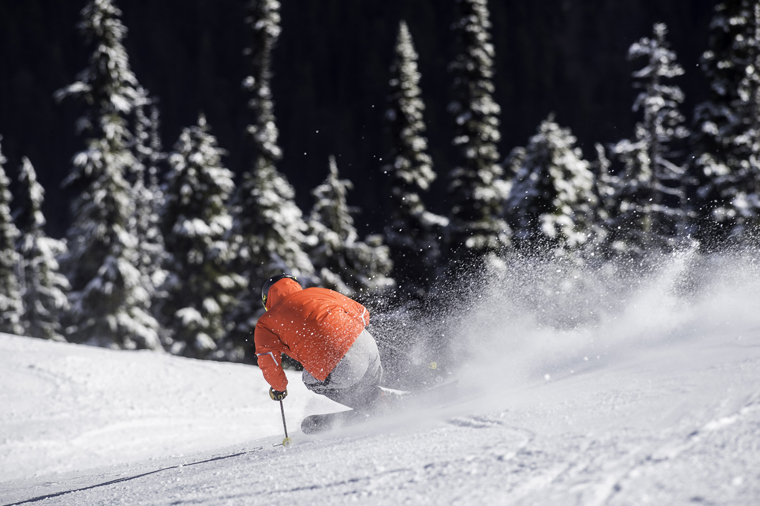How to glide faster on the flat


Have you ever wondered why some people travel faster along those long flat blue runs? You think you’re going pretty fast when suddenly a ski instructor with his poles nonchalantly behind his back and two tiny race club kids wrestling each other overtake you. How are they going faster than you? They’re not even trying! Good news: there are a few tips and tricks that can help you to go faster.
The best starting point is to make sure that you’re carrying more speed when you start the flats. Be a little bit braver about where you are willing to let the skis run from and you’ve got a huge advantage straight away. Choose a line that’s safe and allows you to enter the flat section with a shallow turn shape and plenty of vision. Then go as straight as possible and let the speed grow.
You want to avoid any sharp twists or skids on the flats. In fact, the more you put your skis on their edges, the more speed you’ll lose. This is probably where the kids gained their extra speed. Not being big fans of turning anyway, they know the slope and exactly where to gun it from…

Bumps at the side of the track can sometimes help you to keep your speed up high but you need to time how you move over them. Suck your legs up to your chest as you travel over the top and then pump your legs down the back side of the hump. Keep the skis in contact with the ground as much as possible as this is always quicker. In racing disciplines like skier-cross, air-time is the biggest enemy. Athletes do everything they can to maintain contact with the snow.
And the blasé ski instructor? Well, he’s most likely very proficient at keeping a really flat ski.
This sounds easy but finding the sweet spot takes practice: not on your edges, not creating any drag or spray, but with enough pressure on the ski to stop it from waggling or flapping.
This is a skill you can try right now or while standing in the lift queue. Swivel a foot so that your ski makes an hourglass shape in the snow. You can only do this with a flat ski so if you manage it you’ve got it right! That is the feeling you want to recreate when you are gliding along. Racers refer to the feeling of the skis ‘swimming’ on the snow.
Body position makes a huge difference to the aerodynamics. As a general rule, the lower you are the better. You create less wind resistance, and being closer to your skis allows you to have a better feel for what they are actually doing.
This is where the quality of your tuck gets put to the test. You want a low wide stance, chest on thighs, hands close together up by your face and poles tucked tight under your arms. Practise in your boots in front of the mirror, then it will come more easily on the hill.
Slip-streaming is a last cheeky little way of maintaining a higher speed for longer. (That pesky ski instructor may well also have pinched a bit of your speed before cruising past…) Follow directly behind someone else and you can cut away most of the wind resistance. Watch out, as you’ll catch them up very quickly, so allow for time to move to the side as you approach! Then stand up tall as you sail by at a much higher speed. Poles behind your back is optional. FL